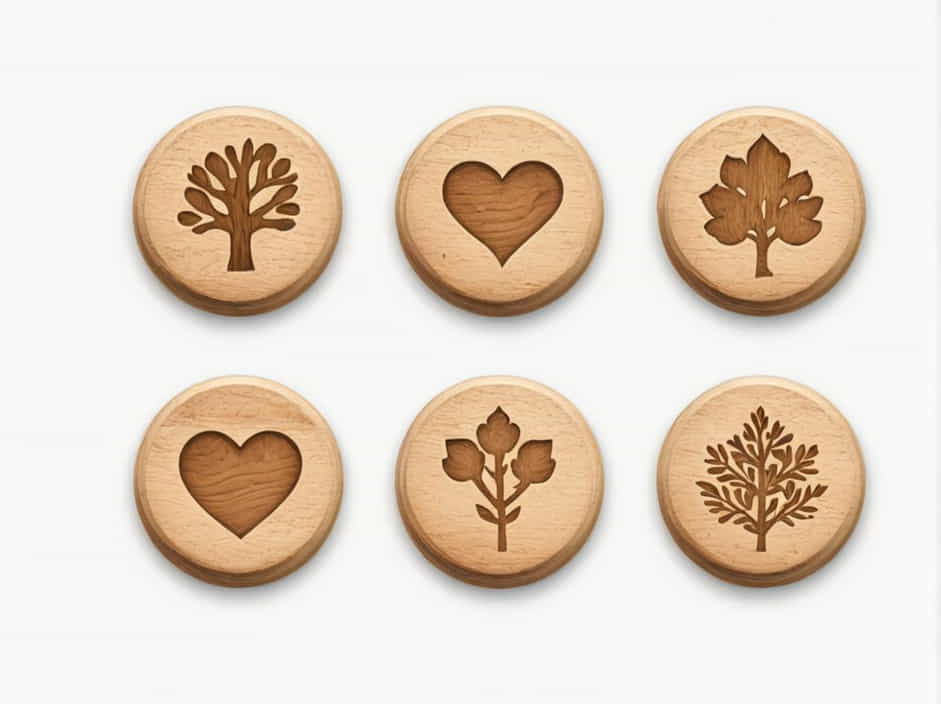When examining wood, one of the most important distinctions is between heartwood and sapwood. These two types of wood exist within the same tree but have different characteristics, functions, and uses.
Understanding the differences between heartwood and sapwood is essential for anyone working with wood, whether in construction, furniture making, or woodworking. This guide will explain their properties, how they form, and how to choose the right type of wood for your project.
What is Heartwood?
Heartwood is the inner, older part of the tree. It is formed when sapwood cells die and harden over time. This process strengthens the wood and makes it more resistant to decay.
Characteristics of Heartwood
- Location: Found at the center of the tree trunk.
- Color: Usually darker due to the accumulation of natural chemicals and resins.
- Density: Harder and more durable than sapwood.
- Function: Provides structural support but no longer transports nutrients.
- Resistance: More resistant to rot, insects, and fungi.
Common Uses of Heartwood
- Furniture Making: Preferred for high-quality wooden furniture due to its strength.
- Flooring: Used for hardwood floors because of its durability.
- Boat Building: Some types, like teak, resist water and rot, making them ideal for marine applications.
- Carvings and Decorative Woodwork: The rich color and hardness make it ideal for artistic projects.
What is Sapwood?
Sapwood is the outer layer of wood, located just beneath the bark. It plays an active role in transporting water and nutrients from the roots to the leaves. Because it is still functioning, it is typically lighter in color and less dense than heartwood.
Characteristics of Sapwood
- Location: Found on the outer part of the tree trunk.
- Color: Lighter in shade compared to heartwood.
- Density: Softer and less durable than heartwood.
- Function: Actively conducts water and nutrients throughout the tree.
- Resistance: More susceptible to decay and insect attacks.
Common Uses of Sapwood
- Construction: Used in structural applications where strength is needed but decay resistance is not a priority.
- Paper Production: Many tree species use sapwood for pulp and paper manufacturing.
- Woodworking Projects: Often used in projects where appearance is less important.
- Plywood and Veneers: Can be used for internal layers in plywood production.
Key Differences Between Heartwood and Sapwood
| Feature | Heartwood | Sapwood |
|---|---|---|
| Location | Center of the tree | Outer layers of the tree |
| Function | Provides structural support | Transports water and nutrients |
| Color | Darker | Lighter |
| Density | Higher density | Lower density |
| Durability | More resistant to rot and insects | Less resistant to decay |
| Common Uses | Furniture, flooring, boats | Construction, paper, plywood |
How Heartwood and Sapwood Form
A tree starts with only sapwood. As the tree matures, the inner layers of sapwood gradually die, becoming heartwood. This transformation occurs because the older cells no longer transport nutrients and begin to accumulate natural oils, tannins, and other substances that make the wood stronger and more durable.
Sapwood remains active for several years, but as new layers form on the outer trunk, older sapwood transitions into heartwood. This process varies between tree species, meaning some trees have a large amount of heartwood, while others have mostly sapwood.
Pros and Cons of Heartwood and Sapwood
Heartwood Pros and Cons
✅ Stronger and more durable
✅ More resistant to pests and rot
✅ Richer color for aesthetic appeal
❌ More expensive due to higher demand
❌ Harder to work with because of density
Sapwood Pros and Cons
✅ More flexible and easier to cut
✅ Cheaper and more widely available
✅ Ideal for paper and plywood production
❌ Less resistant to decay and insects
❌ Not as strong as heartwood
How to Identify Heartwood and Sapwood
-
Check the Color
- Heartwood is typically darker due to the accumulation of tannins and resins.
- Sapwood is lighter, sometimes appearing creamy white or pale yellow.
-
Test the Hardness
- Heartwood is denser and harder, making it more difficult to scratch.
- Sapwood is softer and easier to cut.
-
Look at the Location
- If the wood is from the center of the log, it is heartwood.
- If it comes from the outer section, it is sapwood.
-
Observe Resistance to Decay
- Heartwood is naturally more resistant to moisture and rot.
- Sapwood decays faster when exposed to humidity.
Choosing the Right Wood for Your Project
The choice between heartwood and sapwood depends on the application:
- For long-lasting furniture and flooring → Heartwood is the best choice.
- For structural building materials → Sapwood is more affordable and easier to work with.
- For decorative pieces → Heartwood offers rich, deep colors and grain patterns.
- For projects exposed to moisture → Heartwood resists rot and decay better.
Heartwood and sapwood serve different purposes in both nature and woodworking. Heartwood is stronger, more durable, and more resistant to decay, making it ideal for furniture, flooring, and high-end woodwork. Sapwood, on the other hand, is more affordable, lighter in color, and still plays an active role in the tree’s life.
Understanding these differences allows you to choose the best type of wood for your needs, ensuring your project is both functional and long-lasting.
